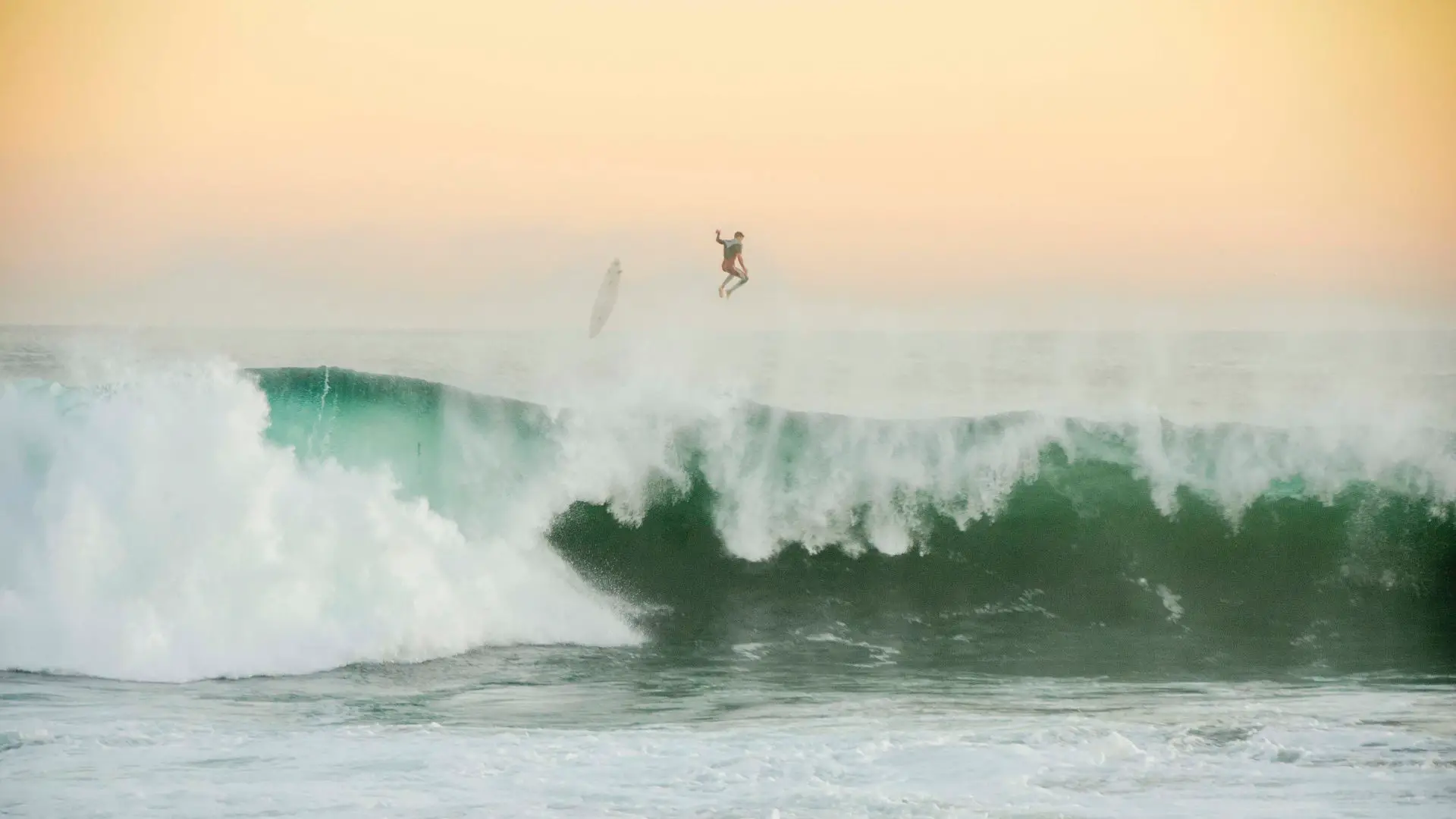How is a Wave Formed & Created?

We know what a wave is, but can we answer how is a wave formed across the world's oceans?
What impacts how is a wave formed? Why are waves formed?
Don’t worry! All these questions will be answered in the article!
How is a Wave Formed Short Answer
Ocean waves are formed by the transfer of energy from the wind to the water surface, creating ripples that develop into waves as they travel across the ocean.
How is a Wave Formed in The Ocean
Waves in the ocean are formed primarily by the wind's energy transferring to the water's surface.
The process begins when the wind blows across the ocean, creating friction with the water. This friction causes small ripples to form, which then evolve into breaking waves.
As the wind continues to blow, these waves grow in size and organise into sets, creating the familiar undulating motion on the ocean's surface.
How is a Wave Formed Step by Step
- Wind Energy Transfer: Waves start with the transfer of energy from the wind to the water's surface. The stronger the wind, the more energy is imparted to the water.
- Ripple Formation: Initially, the wind creates small ripples on the water's surface. These ripples are the building blocks of waves.
- Wave Evolution: With sustained wind, these ripples organise into more defined waves, forming a wave train that travels across the ocean.
- Growing Wave Sets: As the wind continues, waves within the wave train grow in size and organise into sets, creating the diverse range of wave patterns observed on the ocean.
Good Waves for Surfing Factors
Low-Pressure Systems
Low-pressure systems, often associated with storms, create ideal conditions for generating quality surfing waves.
As the low-pressure moves, it generates strong winds over the ocean, leading to the formation of powerful and consistent waves.
Surfers often seek out these conditions for optimal wave-riding experiences.
Sand Banks
The underwater topography, particularly sandbanks, significantly influences wave quality. Sandbanks can channel and shape incoming waves, causing them to break in a desirable manner for surfing.
Sandbanks contribute to the formation of "barrels" or "tubes," providing surfers with exciting and challenging conditions.
Increasing the Wave Crest
Conditions that enhance the height and power of wave crests contribute to excellent surfing waves.
Factors such as increased wind speed and consistent swell direction play a crucial role in amplifying wave size and intensity.
Surfers often look for locations where these elements come together to ensure an exhilarating and satisfying surfing experience.
Does The Moon Cause Waves
Yes, the moon does cause waves through gravitational forces. The moon's gravitational pull creates tides in Earth's oceans, leading to the rise and fall of water levels.
These tidal movements contribute to the formation of waves, albeit on a smaller scale compared to wind-generated waves
What Causes Huge Waves To Form?
Huge waves in the sea are primarily caused by strong winds.
When powerful winds blow across the ocean's surface, they transfer energy to the water, creating large and powerful waves. This can be measured and forecast by determining the swell period.
Other factors, such as storms, low-pressure systems, and underwater topography, can also contribute to the formation of exceptionally large waves.
Surf Forecasting
Surf forecasting involves predicting wave conditions to assist surfers in planning their sessions.
Meteorological data, including wind patterns, swell direction, and wave heights, is analysed to generate forecasts.
Websites and apps provide real-time information, helping surfers choose the best times and locations for optimal surfing experiences.
Wind and Wave Facts
Wind Influence
Wind is a crucial factor in wave formation. Strong, consistent winds over the ocean generate larger waves, while onshore and offshore winds impact wave shape and quality.
Offshore winds tend to create cleaner waves, ideal for surfing.
Swell Direction
Swell direction matters for surfers. A favourable swell direction aligns with the coastline, maximising wave quality.
Cross-shore or onshore swells can lead to choppy or less rideable conditions. This is an important factor in relation wave formation.
Wave Heights
Wave height is a key consideration. Surfers often seek specific wave heights based on their skill level and preferences.
Larger waves provide more challenging conditions, while smaller waves are suitable for beginners.
Summing It Up: What To Do Now
Now when you're next surfing you will understand how is a wave formed! Be sure to check the surf forecast before heading out!
If your interested in learning more about surfing discover our many guides that will inform you on your surfing journey. Don't forget to follow us on Facebook & Instagram to stay informed on our amazing surf shots and stories shared from surf creators around the world!
Frequently Asked Questions
What are the 3 main causes of waves?
Wind, seismic activity (earthquakes), and gravitational forces from the moon and sun.
How do waves form GCSE geography?
Waves form in GCSE geography through wind blowing across the ocean surface, influenced by factors like wind speed and duration.
How do waves get so big?
Waves can grow in size due to strong and sustained wind, transferring more energy and increasing wave height.
How are waves formed for kids?
Waves form when wind creates ripples on water or when there are earthquakes or volcanic activity underwater.
How are waves produced in physics?
Waves in physics result from the transfer of energy through a medium, such as electromagnetic waves through space or mechanical waves in water.
Why are waves white?
Waves appear white due to sunlight reflection as their crests and troughs scatter sunlight, creating the perception of a white appearance.


